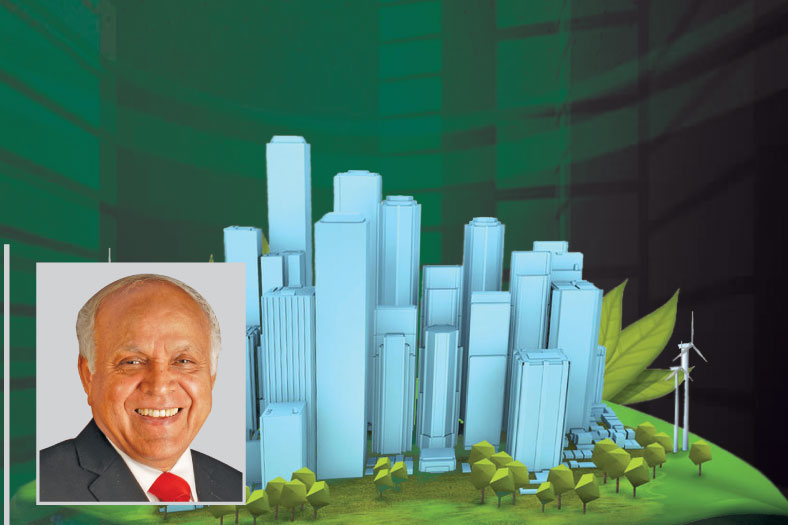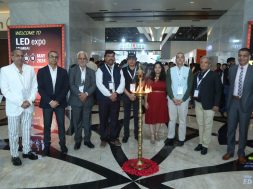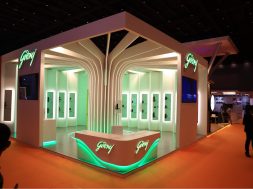Painting India ‘Green’

“The need of the hour is to aggressively promote green buildings and paint the country green,”
Dr Prem C Jain, Chairman, Indian Green Building Council
In an interview with ACE Update, Dr Prem C Jain, Chairman, Indian Green Building Council shares his views on how green buildings benefit owners and occupants. He also talks about future trends of green buildings.
What are the factors that will accelerate green buildings in India?
Today, India is well poised to further accelerate the green building movement in the country and set still higher benchmarks in sustainable construction, all across the country.
Indian Green Building Council (IGBC), with over 4.48 billion sq. ft. registered green footprint, has enabled India to be proud of having the world’s second largest green footprint country. Over 3,900 projects are adopting IGBC green building rating systems. IGBC aspires to facilitate 10 billion sq. ft. of green building footprint by 2022, when we would be celebrating the 75th anniversary of India’s independence.
IGBC, through its multi-pronged strategy, has established a clear business case for green buildings; it has highlighted that constructing a green building is technically feasible and economically viable.
The phenomenal achievement of IGBC in promoting the Green Building Movement in India has been largely due to total transparency, voluntary service by leaders and development of ratings based on Indian codes and standards, seeking guidance of the best minds in the country. Consequently IGBC ratings have been well received by the stakeholders and all types of their projects are adopting IGBC green building rating systems. Today, India is in the forefront in designing some of the finest green buildings anywhere in the world.
The need of the hour is to further accelerate the green building movement in India and make green the way of life as has been for centuries before. The place we live, work, study and play should go the green way. To make this happen, offering incentives in the form of higher Floor Area Ratio (FAR), rebate in property tax and speedy statutory approvals will go a long way in further accelerating the green building movement in the country.
It is indeed inspiring to witness that several government bodies across the country have started offering additional Floor Area Ratio (FAR)/Floor Space Index (FSI) to IGBC registered projects. Some of the larger government agencies offering incentives to green building projects are Pune Municipal Corporation, Punjab Urban Development Authority, Jaipur Development Authority, Kolkata Municipal Corporation, Uttar Pradesh Housing and Urban Planning Department, Greater Noida Industrial Development Authority (GNIDA) and many more in the pipe-line.
We believe offering incentives to developers, builders and users of green buildings will be the biggest accelerator for green buildings growth in India. This in turn will further consolidate India’s leadership in green buildings and green built-environment.
Are green buildings economically viable?
Yes, green buildings are economically viable. One of the reasons why green buildings are widely accepted by the stakeholders is that today green buildings indeed make good business sense. The incremental cost of a commercial green building has come down to 3 to 4 per cent; this additional cost gets paid back within 3 to 4 years through substantial reduction in operational costs. This important proposition is enabling stakeholders to go the green way.
All types of buildings including government buildings, airports, banks, convention centres, cities, factories, hospitals, hotels, institutions, existing buildings, MRTS, malls, IT parks, offices, homes, schools, villages, places of worship and many other applications are adopting IGBC green building guidelines.
We in IGBC foresee, the day is not far when the cost of a green building would be equal to that of a conventional building. The place we live, work, study, play and commute, will all be green.
How green buildings benefit owners and occupants?
Green buildings by design offer both tangible and intangible benefits. Lower operational costs are largely experienced in energy and water consumption. Green buildings offer energy savings to the tune of 40 to 50 per cent and water savings of 20 to 30 per cent, vis-à-vis the conventional buildings.
Additional benefits includes excellent day lighting through the use of high performance glass, which allows light while precluding the heat, and enhanced indoor air quality resulting in improved health and productivity of occupants. Green buildings also have the potential to reduce carbon-dioxide emissions. For example, a platinum or gold rated building can lower emissions by 12,000 to 15,000 tonne, for every million sq. ft. of built up area.
There is a great opportunity for those involved in design and construction. For instance, green rated IT parks have been able to attract ‘premium’ tenants and have been able to retain them for longer periods of tenancy. Most of the green rated IT parks were able to market their spaces better during the recent recessionary market conditions. There is also a pride and a sense of fulfilment living in a green building. Green buildings not only benefits owners and occupants but also play a catalytic role in addressing various ecological issues and concerns.
What are your views on green building materials used in India?
Technically, green building design, construction and operation incorporate the latest innovative technologies and materials, which are ecologically superior, enhance occupants comfort and are built around nature to provide sustainability. Adopting green design and construction practices facilitates not only lower energy consumption, lesser material utilisation and reduced emissions, but also results in improved quality of life for the occupants. Green buildings simultaneously eliminate all waste from going to dumping grounds. All green buildings require zero solid waste disposals and no waste water connection to the municipal facilities.
Some of the latest green building materials and technologies promoted by IGBC are as are home irrigation technologies, cool roofs, vertical landscaping, hybrid–HVAC systems, heat recovery wheels, task lighting, small grey water treatment systems, solar water heaters, timer based controls for lawn sprinklers, sensors and controls for efficient lift management, dimmer controls for lighting, movement sensors for lighting, materials with recycled content (fly ash blocks, tiles, etc.), bamboo based materials and eco-friendly chemicals.
All the current 18 IGBC Green Building Rating Systems enable the designer to apply integrated green concepts and reduce environmental impacts that are measurable and verifiable. These rating systems address the most important national priorities which include water conservation, waste management, energy efficiency, reduced use of fossil fuels and lesser dependence on usage of virgin materials.
The focus is on promoting materials that are repeatedly re-used. This facilitates in bringing down the demand for virgin materials, and adds new lease of life to the used materials. Today many of the IGBC rated homes and commercial buildings are able to integrate old and used materials, without compromising on aesthetics, safety and environment.
IGBC Green Building Rating Systems encourage project teams to adopt energy modelling and other software techniques to explore various design options, material specifications, and equipment and control systems. IGBC estimates that by the year 2025, market potential for green building products and technologies in India would be of the order of USD 300 billion.
What will be future trends for green buildings?
Since 75 per cent of the buildings that would exist in 2050 are yet to be built, there exist huge opportunities for design and construction of green buildings. Going green not only addresses ecological issues and concerns but also makes good business sense.
IGBC foresees that the next 10 years will be the decade of integrated sustainable built environment. This will mostly be in the form of large integrated townships, satellite cities, gated communities and campuses with multiple buildings. This development presents an enormous opportunity to design the projects as green from day one and facilitate in building a greener and healthier India
The increased thrust given for greener and smarter cities by the India government is indeed a step in the right direction, and augurs well for sustainable urban development of the country. It is hoped that all urban habitats will be designed as green from day one, and will influence the way of life for people living in such cities. All the upcoming cities must be designed in such a way that they are future-ready and meet the growing urban needs.
How IGBC is envisioning green buildings in India?
IGBC strongly believes that going the green way will not only improve efficiency and competitiveness, but will also enable to build a low carbon economy in India. The need of the hour is to aggressively promote green buildings and paint the country green. By going the green way, we are doing well not only to ourselves but also to our future generations.
To make this happen, IGBC is looking beyond buildings and is focusing on greening of all forms of built environment. IGBC through its multi-pronged strategy is ushering a paradigm shift in the way buildings are conceived and designed. IGBC’s immediate focus is on affordable housing, health and wellbeing, green railway stations, healthcare and green villages.
IGBC plans to further add local chapters across the length and breadth of the country, beyond the 22 local chapters currently actively involved in percolating the green building movement in different parts of the country.
18
Cookie Consent
We use cookies to personalize your experience. By continuing to visit this website you agree to our Terms & Conditions, Privacy Policy and Cookie Policy.






